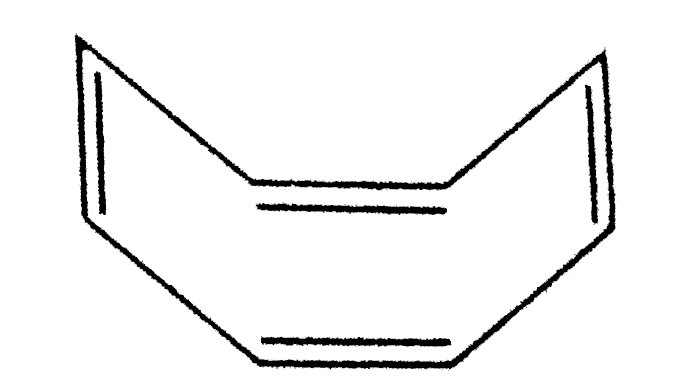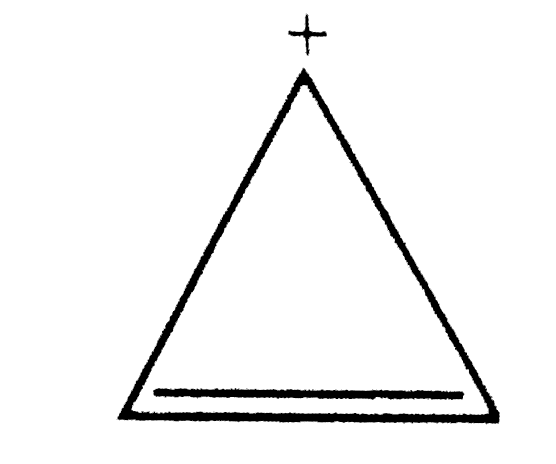Which of the following is aromatic in nature?




The correct Answer is:C
To determine which of the given compounds is aromatic in nature, we need to follow a systematic approach based on the criteria for aromaticity. Here’s a step-by-step solution:
Step 1: Understand the Criteria for Aromaticity
A compound must meet the following criteria to be considered aromatic:
1. Cyclic Structure: The compound must be cyclic.
2. Planarity: The compound must be planar (flat).
3. Conjugation: There must be a continuous overlap of p-orbitals (conjugation).
4. Hückel's Rule: The compound must have 4n+2 π electrons, where n is a non-negative integer (0, 1, 2, ...).
Step 2: Analyze Each Compound
Now, we will analyze each compound based on the criteria mentioned above.
Compound A:
- Cyclic: Yes
- Planar: No (tub-like structure)
- Conjugation: Not applicable due to lack of planarity.
- Conclusion: Not aromatic.
Compound B:
- Cyclic: Yes
- Planar: Yes
- Conjugation: Yes (lone pairs and π bonds are involved in conjugation)
- π Electrons: 4 (2 from π bonds and 2 from lone pairs)
- Hückel's Rule: Does not satisfy 4n+2 (since 4 is 4n for n=1).
- Conclusion: Anti-aromatic (not aromatic).
Compound C:
- Cyclic: Yes
- Planar: Yes
- Conjugation: Yes (continuous overlap of p-orbitals)
- π Electrons: 2 (only from π bonds)
- Hückel's Rule: Satisfies 4n+2 (for n=0, 2 π electrons).
- Conclusion: Aromatic.
Compound D:
- Cyclic: Yes
- Planar: No (not flat)
- Conjugation: Not applicable due to lack of planarity.
- Conclusion: Not aromatic.
Step 3: Final Conclusion
Based on the analysis, Compound C is the only aromatic compound among the options provided.
A compound must meet the following criteria to be considered aromatic:
1. Cyclic Structure: The compound must be cyclic.
2. Planarity: The compound must be planar (flat).
3. Conjugation: There must be a continuous overlap of p-orbitals (conjugation).
4. Hückel's Rule: The compound must have 4n+2 π electrons, where n is a non-negative integer (0, 1, 2, ...).
Now, we will analyze each compound based on the criteria mentioned above.
- Cyclic: Yes
- Planar: No (tub-like structure)
- Conjugation: Not applicable due to lack of planarity.
- Conclusion: Not aromatic.
- Cyclic: Yes
- Planar: Yes
- Conjugation: Yes (lone pairs and π bonds are involved in conjugation)
- π Electrons: 4 (2 from π bonds and 2 from lone pairs)
- Hückel's Rule: Does not satisfy 4n+2 (since 4 is 4n for n=1).
- Conclusion: Anti-aromatic (not aromatic).
- Cyclic: Yes
- Planar: Yes
- Conjugation: Yes (continuous overlap of p-orbitals)
- π Electrons: 2 (only from π bonds)
- Hückel's Rule: Satisfies 4n+2 (for n=0, 2 π electrons).
- Conclusion: Aromatic.
- Cyclic: Yes
- Planar: No (not flat)
- Conjugation: Not applicable due to lack of planarity.
- Conclusion: Not aromatic.
Based on the analysis, Compound C is the only aromatic compound among the options provided.
Topper's Solved these Questions
- BOOK - NCERT FINGERTPS ENGLISHCHAPTER - PRACTICE PAPER 2EXERCISE - Practice Paper 244videos
PRACTICE PAPER 2
- BOOK - NCERT FINGERTPS ENGLISHCHAPTER - PRACTICE PAPER 1EXERCISE - Practice Paper 144videos
PRACTICE PAPER 1
- BOOK - NCERT FINGERTPS ENGLISHCHAPTER - PRACTICE PAPER 3EXERCISE - Practice Paper 346videos
PRACTICE PAPER 3
Similar Questions
Which of the following is aromatic amine?
View SolutionWhich of the following in not aromatic in nature?
View SolutionWhich of the following is anti-aromatic in nature?
View Solutionwhich of the following is aromatic AA?
View SolutionWhich of the following is acidic in nature ?
View SolutionWhich of the following is non − aromatic in nature ?
View SolutionWhich of the following is not aromatic?
View SolutionWhich of the following is anti− aromatic in nature ?
View SolutionWhich of the following is aromatic carbanion?
View SolutionWhich of the following is aromatic hydrocarbon ?
View Solution

